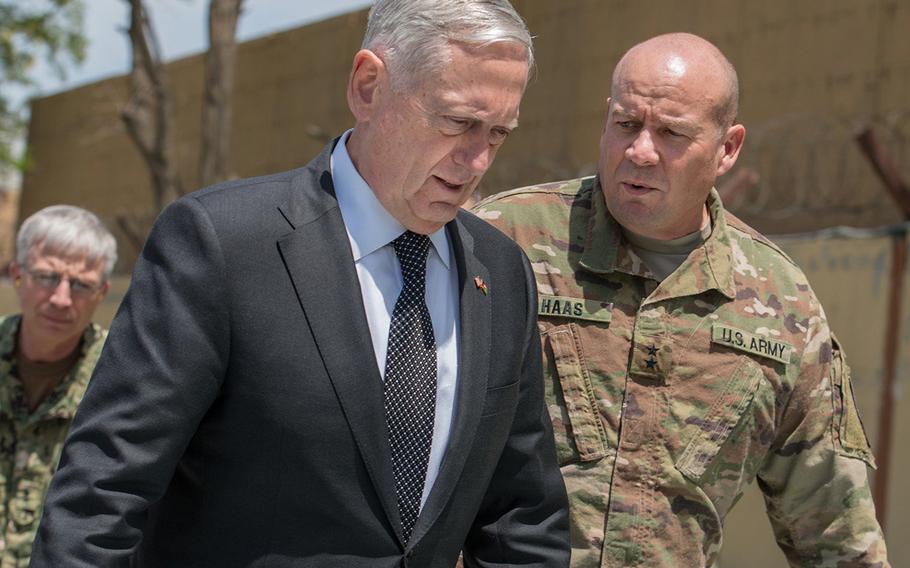
U.S. Defense Secretary Jim Mattis is greeted by Army Maj. Gen. Christopher K. Haas, deputy chief of staff for NATO's Resolute Support operations, as he arrives Monday, April 24, 2017 at coalition headquarters in Kabul, Afghanistan. (Corey Dickstein/Stars and Stripes)
WASHINGTON — President Donald Trump has authorized Secretary of Defense Jim Mattis to set troop levels in Iraq and Syria without White House approval, the Pentagon confirmed Thursday.
The switch gives the Pentagon more autonomy to determine how many forces are required in the fight against Islamic State.
“The president has delegated authority to the secretary of defense to determine force management levels for Iraq and Syria. No change to current authorized force levels has been made,” said Pentagon chief spokeswoman Dana White.
“This does not represent a change in our mission in Iraq and Syria to defeat ISIS.,” White said, noting that delegating troop level decisions to the secretary of defense “enables military commanders to be more agile, adaptive and efficient in supporting our partners, and enables decisions that benefit unit readiness, cohesion and lethality.”
Under the previous administration, decisions to return forces to Iraq and to deploy forces to Syria were tightly controlled by the White House and announced by President Barack Obama. The number of forces allowed in either country was governed by official force management levels, caps that had little bearing on the actual number of forces in either country. In Iraq, those caps were the result of negotiations with the Iraqi government and addressed Iraqi sensitivities to having large numbers of American forces return there.
To increase troops when needed without upsetting the force management levels, the Pentagon decided that several categories of forces -- including those on a temporary duty of 120 days or less, and some categories of special operations forces -- did not count against the cap. For months, when asked how many servicemembers were in either country, the Pentagon would cite the cap and decline to identify how many personnel were there above the cap.
As a result, while Syria’s current force management level is 503, there are about 900 serving there; in Iraq, while 5,262 U.S. troops are authorized, the number of forces there is more than 7,000, a U.S. defense official said on the condition of anonymity.
The official said the Pentagon is reviewing the number of troops it has in both countries and how troop levels will be reported in the future.
copp.tara@stripes.com Twitter: @TaraCopp